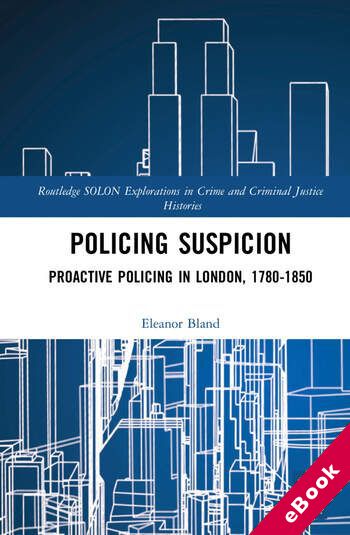We will be closed from 5pm Thursday 17th April for the Easter Bank Holidays, re-opening at 8.30am on Tuesday 22nd April. Any orders placed during this period will be processed when we re-open.

The device(s) you use to access the eBook content must be authorized with an Adobe ID before you download the product otherwise it will fail to register correctly.
For further information see https://www.wildy.com/ebook-formats
Once the order is confirmed an automated e-mail will be sent to you to allow you to download the eBook.
All eBooks are supplied firm sale and cannot be returned. If you believe there is a fault with your eBook then contact us on ebooks@wildy.com and we will help in resolving the issue. This does not affect your statutory rights.
Policing Suspicion is an innovative examination of policing practices and the impact of these on patterns of arrest and prosecution in London, 1780-1850. The work establishes and defines the idea of 'proactive policing' in historical context: where police officers exercised discretion to arrest defendants on suspicion that they had recently committed, or were about to commit, an offence.
Through detailed examination of primary sources, including the Old Bailey Proceedings, newspaper reports, instructions for police officers, archival records of policing practices and Select Committee reports, the book examines the reasons given for arrests, and the characteristics of those arrested. Suggesting that individual police officers made active choices using their discretion, the book highlights how policing practices affected the received record of criminal activity. It also explores continuities and changes in policing practices before and after the establishment of the Metropolitan Police force in 1829, examining the expectations placed on the various officials responsible for law enforcement. The book contends that policing practices, and proactive officers themselves, contributed to the prevalence of criminal stereotypes. Beyond the historical, the book is situated within criminological frameworks around policing and preventive justice, noting parallels between historical policing based on suspicion and contemporary police powers such as stop and search.
Speaking to issues of wider significance for criminologists by examining interactions between the police and suspects, and reflecting on police decision making processes, the book offers an original approach to those researching both the history of crime and policing, and criminology and criminal justice more broadly.